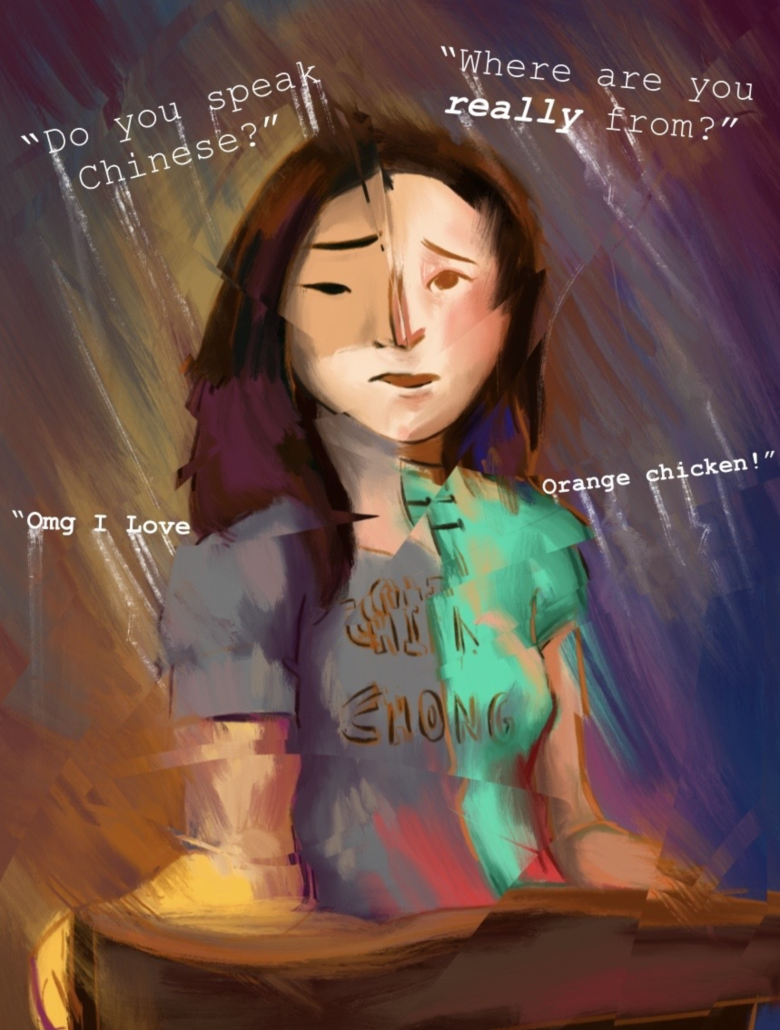Microaggressions are not cute

Growing up in a predominantly Asian/Asian American community, my ethnicity as a Chinese American woman was never an issue. So, when I came to USC, I experienced a culture shock. People have assumed that I don’t speak English or that the foreign language I chose to take is Chinese. These are examples of microaggressions — thinly veiled, everyday instances of racism, homophobia, sexism and more that you see in the world that are often subtle or unintentional.
Although most of the perpetrators mean no harm, they still use stereotypes to categorize me and make assumptions based off of those categorizations. I often find myself brushing these comments off. I used to think that these comments were simple misunderstandings and were not significant enough for me to speak up.
Although the term “micro” in microaggressions may suggest otherwise, these actions have lasting, negative impacts on their recipients and can’t be disregarded.
Macroaggressions, on the other hand, are often at the forefront of the conversation about racism. However, their ‘micro’ counterparts can be just as harmful in marginalizing people of color. According to BBC, “A slow accumulation of these microaggressions can lead to low self-esteem, feelings of alienation and eventually even mental health issues, researchers warn. They can also create a toxic work environment.”
In terms of my experiences as a student at USC, the University does thankfully recognize microaggressions as a problem, even claiming to “Foster a community of diverse viewpoints in order to build a generation of innovators, leaders, visionaries and creators.” However, the preventative actions they choose to implement are rather passive. The Sol Price School of Public Policy has uploaded a booklet of micro intervention strategies. Moreover, there is a whole page dedicated to resources for students, faculty and staff to report wrongdoings.
There are also workshops that are offered such as The Justice Equity Diversity Inclusion’s JEDI 102: Implicit Bias and Microaggressions. Although providing resources is a necessary part of preventing microaggressions, these passive solutions require an individual to be actively seeking additional support about an encounter that may have already been extremely upsetting.
The University should take more active approaches to fight microaggressions by requiring students, faculty and staff to learn about these actions and what they can do to prevent them. For example, The Annenberg School for Communication and Journalism has core courses that are mandatory for all media center students, faculty and staff. These courses raise awareness by having courses such as Interrupting and Confronting Explicit Acts of Racism and Sexism in the Newsroom.
These classes are extremely beneficial to the USC community, but they need to be implemented on a more wide-scale level. USC should require all its students, faculty and staff to take at least one workshop about microaggressions every year to ensure that this topic isn’t disregarded. The University can also require its clubs and organizations to also have meetings addressing xenophobia — micro and macro aggressions.
As a student and person of color at this University, I want the school to take more direct approaches to combat microaggressions. Race should not negatively impact anyone’s life. By enforcing more active methods, USC can create a safer, hospitable environment for all of its members to thrive in.

